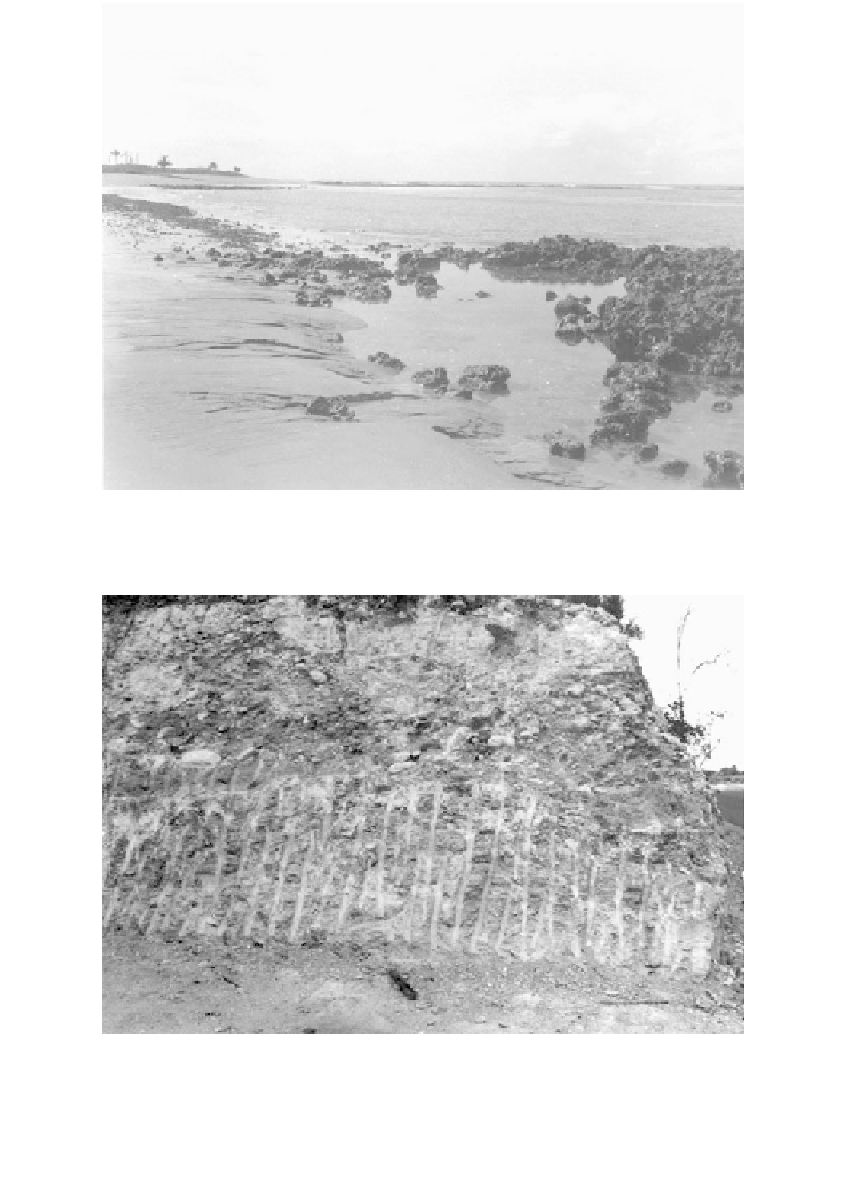Environmental Engineering Reference
In-Depth Information
FIGURE 7.107
Reef formation of “canga” in Tertiary coastal plain soils (Jacariape, Espirito Santos, Brazil).
FIGURE 7.108
Caliche deposited in a terrace formation (Tucson, Arizona). Upper 1/2-m-thick layer at the top of the cut is
hard, whereas the lower 1/2-m-thick stratum at the bottom is relatively soft. Both required cutting with a
jackhammer. (Photo by R. S. Woolworth.)
precipitate. As long as the general environment (topography, rainfall, and temperature)
remains more or less constant, precipitation will continue and a mass of carbonate will
form, cementing the soil into a nodular calcareous rock. The lower portion of caliche crust
is likely to consist largely of angular rock fragments held together by the carbonate.
Because it resembles concrete aggregate, it is commonly termed calcrete.


